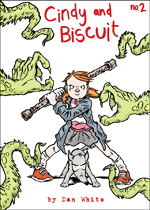Three Fools – Part 3: Morrison’s Joker
May 2nd, 2011
The third of three posts looking at stand out appearances of the Joker
Part 1 here (The Killing Joke)
Part 2 here (The Dark Knight Returns)
I. Quiet in the back row
“It’s quite possible we may actually be looking at some kind of super-sanity here. A brilliant new modification of human perception, more suited to urban life at the end of the twentieth century Unlike you and I, the Joker seems to have no control over the sensory information he’s receiving from the outside world. He can only cope with that chaotic barrage of input by going with the flow. That’s why some days he’s a mischievous clown, others a psychopathic killer. He has no real personality. He creates himself each day. He see himself as the Lord of Misrule and the world as a Theatre of the Absurd.” ~ Dr Ruth Adams, Arkham Asylum
Strangely enough we’ll need to begin this critical excavation not with a Batman comic but with Morrison’s last true commercial failure for DC. Co-authored by Marky Mark Millar and drawn by N. Steven Harris, Aztek the Ultimate Man (ably assessed by my fellow Mindless, The Beast Must Die, here) was Morrison’s first ongoing superhero gig and his only man in pants book to implode in a mere ten issues. As the sales plummeted parachuting in big draw characters like Batman and the Joker must have been as much an editorially mandated necessity as a creative choice, but Morrison made it work and gave us a glimpse of a Clown Prince that wouldn’t be fleshed out for another decade.




